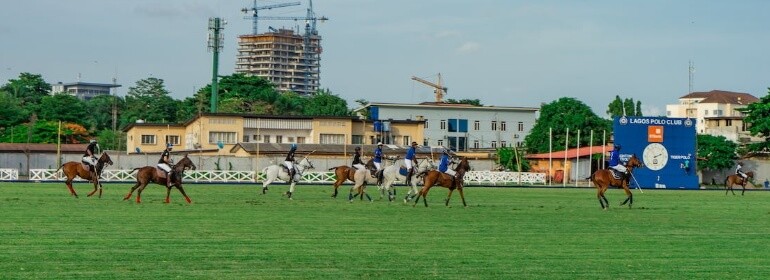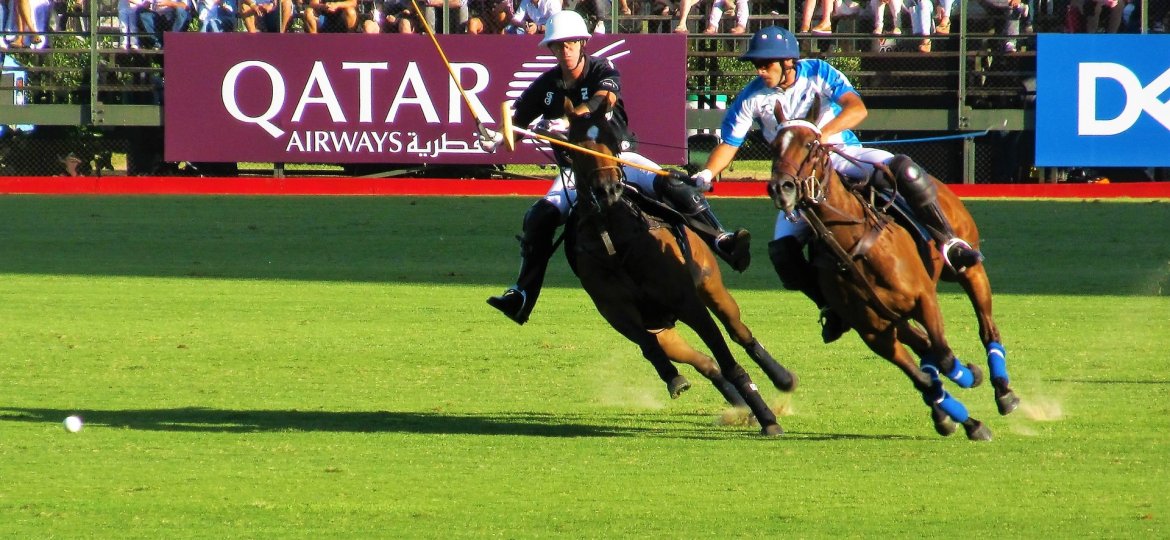
Polo (Horse)
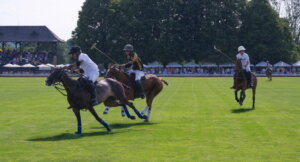
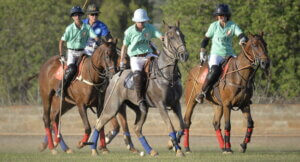
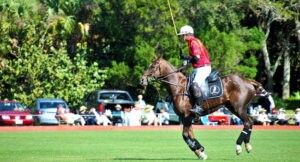
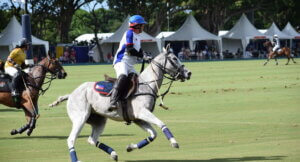
Polo has a rich cultural heritage and has been a popular sport for centuries. In ancient Persia, it was played by nomadic tribes and was considered a training tool for their armies. The sport spread from Persia to the nearby countries and eventually reached the British in India, where it was quickly embraced and became the sport of the British elite. The first recorded polo match in England took place in 1872, and by the late 19th century, polo had become a popular sport among the wealthy and aristocratic classes in Europe and North America.
Polo has a rich cultural heritage and has been a popular sport for centuries. In ancient Persia, it was played by nomadic tribes and was considered a training tool for their armies. The sport spread from Persia to the nearby countries and eventually reached the British in India, where it was quickly embraced and became the sport of the British elite. The first recorded polo match in England took place in 1872, and by the late 19th century, polo had become a popular sport among the wealthy and aristocratic classes in Europe and North America.
Polo has a rich cultural heritage and has been a popular sport for centuries. In ancient Persia, it was played by nomadic tribes and was considered a training tool for their armies. The sport spread from Persia to the nearby countries and eventually reached the British in India, where it was quickly embraced and became the sport of the British elite. The first recorded polo match in England took place in 1872, and by the late 19th century, polo had become a popular sport among the wealthy and aristocratic classes in Europe and North America.
Polo has a rich cultural heritage and has been a popular sport for centuries. In ancient Persia, it was played by nomadic tribes and was considered a training tool for their armies. The sport spread from Persia to the nearby countries and eventually reached the British in India, where it was quickly embraced and became the sport of the British elite. The first recorded polo match in England took place in 1872, and by the late 19th century, polo had become a popular sport among the wealthy and aristocratic classes in Europe and North America.
Polo has a rich cultural heritage and has been a popular sport for centuries. In ancient Persia, it was played by nomadic tribes and was considered a training tool for their armies. The sport spread from Persia to the nearby countries and eventually reached the British in India, where it was quickly embraced and became the sport of the British elite. The first recorded polo match in England took place in 1872, and by the late 19th century, polo had become a popular sport among the wealthy and aristocratic classes in Europe and North America.
Polo has a rich cultural heritage and has been a popular sport for centuries. In ancient Persia, it was played by nomadic tribes and was considered a training tool for their armies. The sport spread from Persia to the nearby countries and eventually reached the British in India, where it was quickly embraced and became the sport of the British elite. The first recorded polo match in England took place in 1872, and by the late 19th century, polo had become a popular sport among the wealthy and aristocratic classes in Europe and North America.
Polo has a rich cultural heritage and has been a popular sport for centuries. In ancient Persia, it was played by nomadic tribes and was considered a training tool for their armies. The sport spread from Persia to the nearby countries and eventually reached the British in India, where it was quickly embraced and became the sport of the British elite. The first recorded polo match in England took place in 1872, and by the late 19th century, polo had become a popular sport among the wealthy and aristocratic classes in Europe and North America.
Polo has a rich cultural heritage and has been a popular sport for centuries. In ancient Persia, it was played by nomadic tribes and was considered a training tool for their armies. The sport spread from Persia to the nearby countries and eventually reached the British in India, where it was quickly embraced and became the sport of the British elite. The first recorded polo match in England took place in 1872, and by the late 19th century, polo had become a popular sport among the wealthy and aristocratic classes in Europe and North America.
Polo has a rich cultural heritage and has been a popular sport for centuries. In ancient Persia, it was played by nomadic tribes and was considered a training tool for their armies. The sport spread from Persia to the nearby countries and eventually reached the British in India, where it was quickly embraced and became the sport of the British elite. The first recorded polo match in England took place in 1872, and by the late 19th century, polo had become a popular sport among the wealthy and aristocratic classes in Europe and North America.
Polo has a rich cultural heritage and has been a popular sport for centuries. In ancient Persia, it was played by nomadic tribes and was considered a training tool for their armies. The sport spread from Persia to the nearby countries and eventually reached the British in India, where it was quickly embraced and became the sport of the British elite. The first recorded polo match in England took place in 1872, and by the late 19th century, polo had become a popular sport among the wealthy and aristocratic classes in Europe and North America.
Polo has a rich cultural heritage and has been a popular sport for centuries. In ancient Persia, it was played by nomadic tribes and was considered a training tool for their armies. The sport spread from Persia to the nearby countries and eventually reached the British in India, where it was quickly embraced and became the sport of the British elite. The first recorded polo match in England took place in 1872, and by the late 19th century, polo had become a popular sport among the wealthy and aristocratic classes in Europe and North America.
Polo is also considered a sport of strategy and skill. The game requires players to make quick decisions, anticipate their opponents’ moves, and work together as a team to score goals. The sport also requires a high level of horsemanship and control, as the player must be able to control their horse while riding at high speeds and maneuvering around opponents.
One of the unique aspects of polo is the use of specially bred and trained horses. Polo horses are known for their speed, agility, and endurance, and they are essential to the sport. These horses are trained to respond to the commands of the player, and they must be able to maintain their speed and stamina for the entire game. The horse-player relationship is a crucial part of polo, and many players form close bonds with their horses, treating them as partners in the sport.
In addition to the physical demands of the sport, polo also requires a high level of mental focus and concentration. Players must be able to react quickly to changing situations on the field and make split-second decisions in the heat of the game. This mental toughness, combined with the physical demands of the sport, makes polo a challenging and rewarding experience for players of all levels.
Polo has a long tradition of supporting charitable causes, and many polo events are organized to raise money for local charities and non-profit organizations. In recent years, polo has also gained popularity as a spectator sport, with thousands of fans attending major tournaments each year. Whether you are a player or a fan, polo offers a unique and exciting experience that is enjoyed by people of all ages and backgrounds.
Polo is a popular sport in several countries, including:
Argentina: Polo has a long and rich history in Argentina, and the country is widely considered the birthplace of modern polo. The Argentine Open Polo Championship is one of the most prestigious polo tournaments in the world, and many of the top players in the sport are from Argentina.
United Kingdom: Polo has been played in the UK for over 150 years, and the country has a strong tradition of polo playing and breeding horses for the sport. The British Open Polo Championship is one of the most prestigious polo tournaments in the world.
United States: Polo is a popular sport in the United States, and the country is home to many of the world’s top polo tournaments, including the US Open Polo Championship. The sport is especially popular in California and Florida, where there are many polo clubs and tournaments throughout the year.
India: Polo has a long and rich history in India, and the sport has been played there for centuries. India is home to some of the world’s oldest and most prestigious polo tournaments, and the sport remains popular among the wealthy and aristocratic classes.
South Africa: Polo is a popular sport in South Africa, and the country has a strong tradition of polo playing and breeding horses for the sport. The South African Polo Open is one of the top polo tournaments in the world.
Australia: Polo is a popular sport in Australia, and the country is home to many polo clubs and tournaments. The Australian Polo Open is one of the top polo tournaments in the world, and the sport is especially popular in the rural and outback areas of the country.
Yes, the Middle East is also a region where polo is popular. The sport has a long history in the region, with roots in Persia (modern-day Iran) dating back over 2,000 years. Today, many of the countries in the Middle East, such as Saudi Arabia, the United Arab Emirates, and Qatar, are home to some of the world’s top polo tournaments and facilities. These countries have invested heavily in the sport, building state-of-the-art polo fields and attracting some of the world’s top players to compete in their tournaments. The Middle East is now a major center of the sport and continues to play an important role in the development and growth of polo.
The popularity of polo in the Middle East is due to a combination of factors, including the region’s rich cultural heritage and its growing interest in equestrian sports. In ancient Persia, polo was played by nomadic tribes as a training tool for their armies, and the sport has been passed down through generations in the region. Today, the Middle East is home to many prestigious polo clubs and tournaments, and it is a hub for the breeding and training of top-quality polo horses.
Many of the countries in the Middle East have made significant investments in the sport, building world-class polo fields, facilities, and infrastructure. This has attracted some of the world’s top players to the region, and the Middle East now plays host to some of the most important polo tournaments in the world. These tournaments showcase the best of the sport and attract spectators from all over the world, making the Middle East a major center of the polo world.
The growth of polo in the Middle East has also helped to promote the sport in other parts of the world. The region’s investment in the sport has allowed it to attract top players from around the world, and this has helped to increase the exposure and popularity of the sport globally. The Middle East is now a hub for polo, and it continues to play a vital role in the development and growth of the sport.
In Saudi Arabia, polo has a long and rich history, and the country is now home to some of the world’s most prestigious polo tournaments and facilities. The sport is very popular among the wealthy and aristocratic classes, and there is a strong tradition of horse breeding and training in the country. The Saudi Arabian national polo team is one of the strongest in the world, and the country is home to many top-level players.
The United Arab Emirates (UAE) is another country in the Middle East with a high popularity for polo. The sport has been growing in the country for many years, and there are now many polo clubs and tournaments in the UAE. Dubai is a particularly popular destination for polo, with several world-class polo fields and a growing number of tournaments throughout the year. The UAE is home to many top players, and the country is now a major center for the sport in the Middle East.
In Qatar, polo has a long and rich history, and the country has been investing heavily in the sport in recent years. The country is now home to many polo clubs and facilities, and it plays host to several important polo tournaments throughout the year. Qatar is home to many top-level players, and the country’s national polo team is one of the strongest in the world.
Bahrain and Kuwait are also countries in the Middle East with a medium popularity for polo. The sport is growing in these countries, and there are now many polo clubs and facilities in both countries. Both countries are home to several important polo tournaments, and they are attracting more players and fans to the sport.
Iran is another country in the Middle East with a medium popularity for polo. The sport has a long history in Iran, and it is still popular in the country today, especially among the wealthy and aristocratic classes. There are several polo clubs and facilities in Iran, and the country is home to many top-level players.
Oman is a country in the Middle East with a low popularity for polo. The sport is growing in the country, and there are now several polo clubs and facilities in Oman. The country is home to a small but dedicated community of polo players, and it is attracting more interest in the sport.
Polo Gear
Polo gear refers to the equipment and clothing worn by polo players. Some of the most important pieces of polo gear include:
Polo Mallet: A polo mallet is the primary tool used by polo players to hit the ball. Polo mallets come in different sizes and are made from a variety of materials, including bamboo, fiberglass, and composite materials.
Polo Helmet: A polo helmet is an essential piece of protective gear that polo players wear to protect their head from injury. Polo helmets are designed to be lightweight and comfortable, and they come in a variety of styles and colors.
Polo Boots: Polo boots are specially designed riding boots that provide support and protection for the rider’s feet. They are typically made from leather and feature reinforced toe caps and ankle support.
Polo Saddle: A polo saddle is a special type of saddle used by polo players. Polo saddles are designed to be lightweight and comfortable, and they often feature a shallow seat and long stirrups to allow the rider to move freely on the horse.
Polo Gloves: Polo gloves are designed to provide protection and grip for the rider’s hands. They are typically made from leather and feature reinforced palm and fingers for extra protection.
Polo Jersey: Polo jerseys are specially designed shirts that are worn by polo players during games. They are typically made from breathable materials and come in a variety of colors and styles.
Polo Trousers: Polo trousers are specially designed pants that are worn by polo players during games. They are typically made from lightweight materials and come in a variety of colors and styles.
In addition to the standard pieces of polo gear, there are also several additional items that players may choose to wear or use during a game. Some of these items include:
Polo Body Protector: A polo body protector is a piece of protective gear that is worn by some polo players to provide extra protection to their chest, back, and ribs. Body protectors are designed to absorb the impact of falls and collisions, and they are typically made from lightweight materials that allow the player to move freely on the horse.
Polo Shin Guards: Polo shin guards are specially designed guards that are worn by some polo players to protect their shins from injury. They are typically made from lightweight materials and are designed to provide a high level of protection while still allowing the player to move freely.
Polo Whip: A polo whip is a tool used by polo players to guide and control their horse. Polo whips are typically made from lightweight materials and feature a flexible shaft and a leather or synthetic tip.
Polo Ball: A polo ball is the ball used in polo games. Polo balls are typically made from plastic or rubber and are designed to be lightweight and durable.
Polo Goggles: Polo goggles are specially designed goggles that are worn by some polo players to protect their eyes from dust, debris, and other flying objects. Polo goggles are typically made from lightweight materials and come in a variety of colors and styles.
Polo Bandages: Polo bandages are special bandages that are used to support the legs of polo horses. They are typically made from lightweight materials and are designed to provide support and protection to the horse’s legs during the game.
Polo Irons: Polo irons are the metal pieces attached to the stirrups of a polo saddle. They are used to help players maintain their balance and control while riding the horse.
Polo Stirrups: Polo stirrups are the metal loops that the player’s feet rest in while riding the horse. They are designed to provide support and stability to the rider and to allow them to move freely on the horse.
Polo Bridle: A polo bridle is a piece of equipment used to control the horse. It consists of a headstall, reins, and bit and is used to guide the horse and to control its speed and direction.
Polo Martingale: A polo martingale is a piece of equipment used to control the horse’s head carriage. It is a strap that runs from the horse’s girth to its noseband and is used to prevent the horse from raising its head too high.
Polo Crops: Polo crops are short riding whips used by polo players to encourage their horse to move forward. They are typically made from lightweight materials and feature a flexible shaft and a leather or synthetic tip.
A typical set of polo gear can include the following items:
Polo Mallet
Polo Helmet
Polo Boots
Polo Saddle
Polo Gloves
Polo Jersey
Polo Trousers
Polo Body Protector
Polo Shin Guards
Polo Whip
Polo Ball
Polo Goggles
Polo Bandages
This list represents a standard set of polo gear and some players may choose to use additional items or variations on these items depending on their personal preferences and the specific needs of their game. It’s important to note that all players are required to wear a polo helmet as a minimum safety requirement during a game.
Training
Polo is a sport that requires a high level of skill and athleticism, and training is an important part of preparing for games and tournaments. There are several components of polo training, including:
Horsemanship: One of the most important aspects of polo training is horsemanship. This includes learning how to ride and control the horse, as well as how to work with the horse to achieve the best performance possible.
Stickwork: Stickwork refers to the skills used to hit the ball in polo. This includes learning how to hold the mallet, how to aim the shot, and how to generate power and accuracy when hitting the ball.
Strategy: Polo is a strategic sport, and training often includes learning and practicing various tactical strategies that can be used during games. This includes learning how to work with team mates, how to create scoring opportunities, and how to defend against opponents.
Physical Fitness: Polo is a physically demanding sport, and physical fitness is an important part of training. This includes exercises and activities that can improve overall fitness, such as strength training, cardio, and agility drills.
Horse Training: In addition to training the player, horses used in polo also require training and preparation. This includes conditioning the horse, training it to respond to the rider’s commands, and preparing it to play the game.
Polo training can be done in a variety of settings, including polo clubs, private facilities, and training centers. Training can be done individually or as part of a team, and can be structured to meet the specific needs and goals of each player or team. Regardless of the method or setting, the goal of polo training is to help players improve their skills and prepare for the demands of the sport.
- Long awaited Playstation 5
- A revolutionary piece of technology
- It has changed the Gaming world
- It comes with Ultra high speed SSD
- Long awaited Playstation 5
- It comes with Ultra high speed SSD
- Velit esse cillum dolore eu fugiat nulla pariatur
- A revolutionary piece of technology
- A revolutionary piece of technology
- A revolutionary piece of technology
- It comes with Ultra high speed SSD
- Ullamco laboris nisi ut aliquip ex ea commodo
- Duis aute irure dolor in reprehenderit in voluptate
- It comes with Ultra high speed SSD
Best Polo Jersey For Men
S==== Lorem ipsum dolor sit amet, consectetur adipiscing elit. Ut elit tellus, luctus nec ullamcorper mattis, pulvinar dapibus leo.
Best Polo Jersey For Women
S==== Lorem ipsum dolor sit amet, consectetur adipiscing elit. Ut elit tellus, luctus nec ullamcorper mattis, pulvinar dapibus leo.
Best Polo Shoes for men
S==== Lorem ipsum dolor sit amet, consectetur adipiscing elit. Ut elit tellus, luctus nec ullamcorper mattis, pulvinar dapibus leo.
Best Polo Shoes for Women
S==== Lorem ipsum dolor sit amet, consectetur adipiscing elit. Ut elit tellus, luctus nec ullamcorper mattis, pulvinar dapibus leo.
Best Polo Socks for men
S==== Lorem ipsum dolor sit amet, consectetur adipiscing elit. Ut elit tellus, luctus nec ullamcorper mattis, pulvinar dapibus leo.
Best Polo Socks for Women
S==== Lorem ipsum dolor sit amet, consectetur adipiscing elit. Ut elit tellus, luctus nec ullamcorper mattis, pulvinar dapibus leo.
Best Polo Gear
When it comes to polo, having the right gear is essential for optimal performance on the field. From polo mallets to helmets, each piece of equipment plays a crucial role in the game. Here is a list of some of the best polo gear, along with their specifications:
Polo Mallets: Polo mallets are the primary tool used to hit the ball during a polo match. They come in various lengths and weights to suit different player preferences. Mallets typically range from 49 to 54 inches in length and can weigh between 180 to 200 grams.
Polo Helmet: A polo helmet is a vital safety accessory that protects the player’s head from potential impact during the game. Helmets are designed to be lightweight, comfortable, and provide adequate protection. They often feature adjustable straps and a visor for additional face protection.
Polo Boots: Polo boots are specially designed to provide support, comfort, and durability while playing the game. They are typically made from high-quality leather and feature a sturdy sole for good traction on the field. Polo boots often come in various styles, including knee-high and ankle-length.
Polo Knee Guards: Knee guards are essential for protecting the knees from potential impact and injuries during the game. They are typically made from high-density foam or gel and are worn over the knees. Knee guards should fit securely and provide adequate cushioning.
Polo Gloves: Polo gloves are designed to offer a good grip on the mallet and reins while protecting the player’s hands. They are typically made from leather and feature reinforced areas on the palm for added durability.
Polo Whistle: A polo whistle is used by the referee to signal fouls, penalties, and game restarts. It is an important tool for maintaining game control and communication among the players and officials.
It is important to choose high-quality polo gear that meets safety standards and offers durability and comfort. Properly fitted gear enhances performance and ensures a safer and more enjoyable polo experience.
- Head Size: 100 square inches
- Length: 27 inches
- Weight (strung): 11.3 ounces
- String Pattern: 16×18
- Swingweight: 320
- Flex: 58
- Balance: 7pts
Polo, a thrilling equestrian sport, requires specialized gear to ensure both player and horse are equipped for the game. Various polo gear brands have gained recognition for their high-quality products, each incorporating specific materials for optimal performance and safety. Here is a list of notable polo gear brand names and the materials commonly used in their products:
Charles Owen: Charles Owen is a renowned brand that produces polo helmets. These helmets are typically constructed with a combination of impact-resistant materials, such as fiberglass or carbon fiber, and soft padding for enhanced safety and comfort.
La Martina: La Martina, a luxury polo brand, offers a range of polo saddles and accessories. Their saddles are expertly crafted using premium leather, ensuring durability, flexibility, and a secure seat for the player.
Argentine Polo: Argentine Polo is a respected brand that specializes in polo boots. Their boots are handcrafted from fine Argentine leather, renowned for its quality and durability, providing excellent protection and support for the player’s feet.
Polo Gear: Polo Gear is a renowned brand that produces a wide range of polo equipment. Their products, including mallets, knee guards, and elbow guards, are often made from high-quality materials such as bamboo, fiberglass, and carbon fiber for durability and performance.
Flex-On: Flex-On is a well-known brand that manufactures stirrups for polo. Their stirrups are engineered using lightweight yet robust materials such as aluminum or titanium, offering stability, shock absorption, and improved rider balance.
Bombers Equestrian Equipment: Bombers Equestrian Equipment specializes in polo bits. Their bits are carefully crafted from materials like stainless steel or sweet iron, providing durability, control, and comfort for the horse during the game.
Fabbri Polo: Fabbri Polo is a respected brand known for its polo boots and polo knee guards. Their boots are made from premium leather, combining style, durability, and support, while their knee guards offer protection with flexible materials like neoprene and foam padding.
When it comes to polo gear, these brands prioritize using high-quality materials to ensure the safety, comfort, and performance of both players and horses. From helmets to saddles, boots to mallets, the combination of craftsmanship and carefully selected materials helps to enhance the overall polo experience.
Trademark Disclaimer:
All trademarks, logos, and brand names are the property of their respective owners. All company, product, and service names used in this website are for identification purposes only. Use of these names trademarks, and brands do not imply endorsement.


